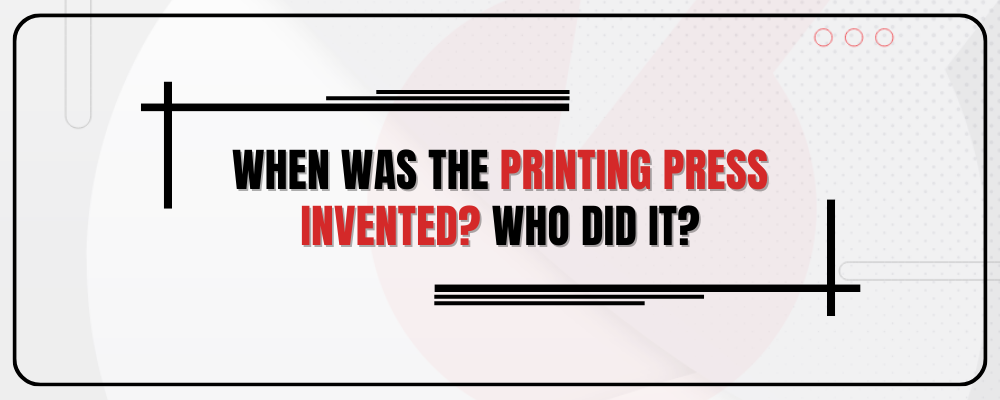The invention of the printing press happened around 1440 by Johannes Gutenberg.
Before this, making books was slow because people had to write them by hand, which took a long time and restricted the availability of written information.
Gutenberg’s printing press changed everything.
This invention marked a significant milestone in human history as it transformed the way information was spread across the globe since at that time, books were rare and costly. But now, everyone can have access to books at relatively cheaper prices.
Who was Johannes Gutenberg?
Johannes Gutenberg was a German inventor and printer born around 1400 in Mainz, Germany. He came from a merchant family and is believed to have received a solid education, likely studying at the University of Erfurt.
Some sources suggest that he may have studied metallurgy and gem-cutting during his early years, which might have influenced his later work on developing the metal movable type used in the printing press.
Aside from the printing press, little is known about other specific inventions attributed to Gutenberg. His primary claim to fame is the invention of the printing press with movable type, which had a profound impact on the accessibility of books.
Gutenberg faced financial challenges during his printing endeavors, and historical records indicate that he entered into a business partnership with Johann Fust, a wealthy businessman. This partnership later led to a legal dispute, resulting in Gutenberg losing control of his printing business to Fust.
Despite the challenges, Gutenberg’s invention laid the foundation for the printing revolution that followed, transforming the way information was produced and distributed. While Gutenberg’s personal life and activities beyond the invention of the printing press remain somewhat mysterious, his contribution to the world of printing and its far-reaching consequences have secured his place as a key figure in the history of technology and communication.
First Book Published Through Printing Press
The first book published using the printing press was the Gutenberg Bible, also known as the 42-line Bible. It was completed around 1455 and represented a major breakthrough in the production of books.
Movable Type Printing Press – How it works?
Gutenberg’s printing press utilized movable metal type, allowing individual characters to be rearranged and reused for different pages. They were like tiny stamps with individual letters on them.
First, tiny pieces of metal with letters on them are made.
These metal bits are put together on a wooden frame by a skilled person called a typesetter.
Next, ink is spread on the raised letters using rollers.
After that, a sheet of paper is carefully placed on top of the inked letters.
The whole setup is put in a printing press, where a flat plate is pressed onto the paper with force. This leaves the inked letters on the paper, creating a printed page.
The press is then lifted, and the paper is taken out.
To make more copies, the typesetter can reuse the metal letters by putting fresh paper on them.
Country First Adopting the Printing Press
Germany was the first country to adopt the printing press, with Gutenberg setting up his press in Mainz. The technology quickly spread to other parts of Europe.
The second country to embrace the printing press was Italy. Venice became a notable center for printing in the late 15th century, and Aldus Manutius, a Venetian printer, played a significant role. He introduced innovations such as the italic typeface and the use of semicolons, contributing to the refinement of the printing process.
While it’s challenging to pinpoint the exact last country to adopt the printing press. However, some regions, particularly in Asia, adopted the printing press later than Europe.
Printing Press Become The Big Business
As the printing press gained popularity, we saw a big rise in printing as a business.
Printers and publishers established workshops, and the business side of printing became increasingly competitive. Printers not only competed for customers but also sought to secure valuable manuscripts to print. This competition led to instances of secrecy, with some printers closely guarding their methods and typefaces to maintain a competitive edge.
The business of printing expanded as demand for books grew.
Printers collaborated with scholars, religious institutions, and civic authorities to produce a wide range of materials, including religious texts, scholarly works, and popular literature.
Printers also engaged in book-selling, often establishing partnerships or operating their own bookshops.
Anecdotal evidence from this period reveals the entrepreneurial spirit of printers who sought to capitalize on the newfound ability to produce books more efficiently.
The success of early printers often depended on factors like the quality of their work, the appeal of the content, and effective marketing strategies.
Controversy Surrounding the Printing Press
The introduction of the printing press sparked various controversies, particularly among the existing scribes and manuscript copyists.
The traditional scribes, who were skilled in hand-copying manuscripts, feared job displacement due to the faster and more efficient printing process as the printing press made their meticulous handwriting skills less in demand.
The arrival of the printing press meant that books could be made quicker and in larger quantities, affecting the job security of those who relied on the old way of copying manuscripts.
This unease led to disputes and tensions between the supporters of the printing press and the traditional scribes. The scribes worried that their livelihoods were at risk, and this resistance created a challenge for the widespread acceptance of the printing press.
However, over time, the advantages of the printing press became evident.
Books became more affordable and widely available, allowing information to spread to more people. The controversy gradually subsided as the printing press demonstrated its power in making knowledge accessible to a broader audience.
Religious Aspect of the Printing Press
Christians Reaction
The printing press played a crucial role in the Protestant Reformation. In the early 16th century, Martin Luther utilized the printing press to disseminate his 95 Theses, challenging the practices of the Catholic Church were widely distributed through printed pamphlets, fueling discussions and debates.
The mass production capabilities of the printing press enabled the rapid spread of Reformation ideas, leading to the establishment of various Protestant sects.
The printing press also made the Bible more accessible to the general public. Prior to the printing press, Bibles were rare and often chained to pulpits in churches. With printing, Bibles became more widely available, allowing individuals to own and read their own copies.
Jewish Reaction
In Judaism, the printing press played a crucial role in preserving and disseminating Jewish religious texts. The first complete edition of the Hebrew Bible, known as the Bomberg Bible, was printed in Venice in the early 16th century. This marked a monumental development in Jewish history, making sacred texts more widely available. Jewish scholars and communities embraced the printing press as a means to reproduce and distribute religious texts. The technology contributed significantly to the preservation of Jewish knowledge, allowing for greater accessibility to the Torah, Talmud, and other important works.
Muslim Reaction
Muslim reactions to the printing press varied within the Islamic world.
While the adoption of the printing press was slower among Asian Muslims compared to Europe, it wasn’t outright rejection. The Ottomans, for instance, started using the printing press in the 16th century.
However, the conservative nature of some Islamic scholars and leaders initially raised concerns about the new technology, as it challenged the traditional method of copying texts by hand.
But over time, it became integrated into the broader Islamic culture and contributed to the dissemination of religious knowledge in the Muslim world.
Employment Impact of the Printing Press
The printing press did lead to a shift in employment patterns.
While it reduced the demand for traditional scribes and copyists, it created new job opportunities in the printing industry.
Printers, typesetters, and bookbinders became essential roles in the production of books.
The overall impact on employment varied, and regions relying heavily on manuscript production experienced more significant changes.
Balancing Handwriting Skills
The advent of the printing press did not completely eliminate the need for handwriting skills. While printing allowed for mass production, there remained a demand for handwritten documents, especially in legal, religious, and artistic contexts. The ability to produce beautifully handwritten manuscripts remained a valued skill, although it became more specialized.






